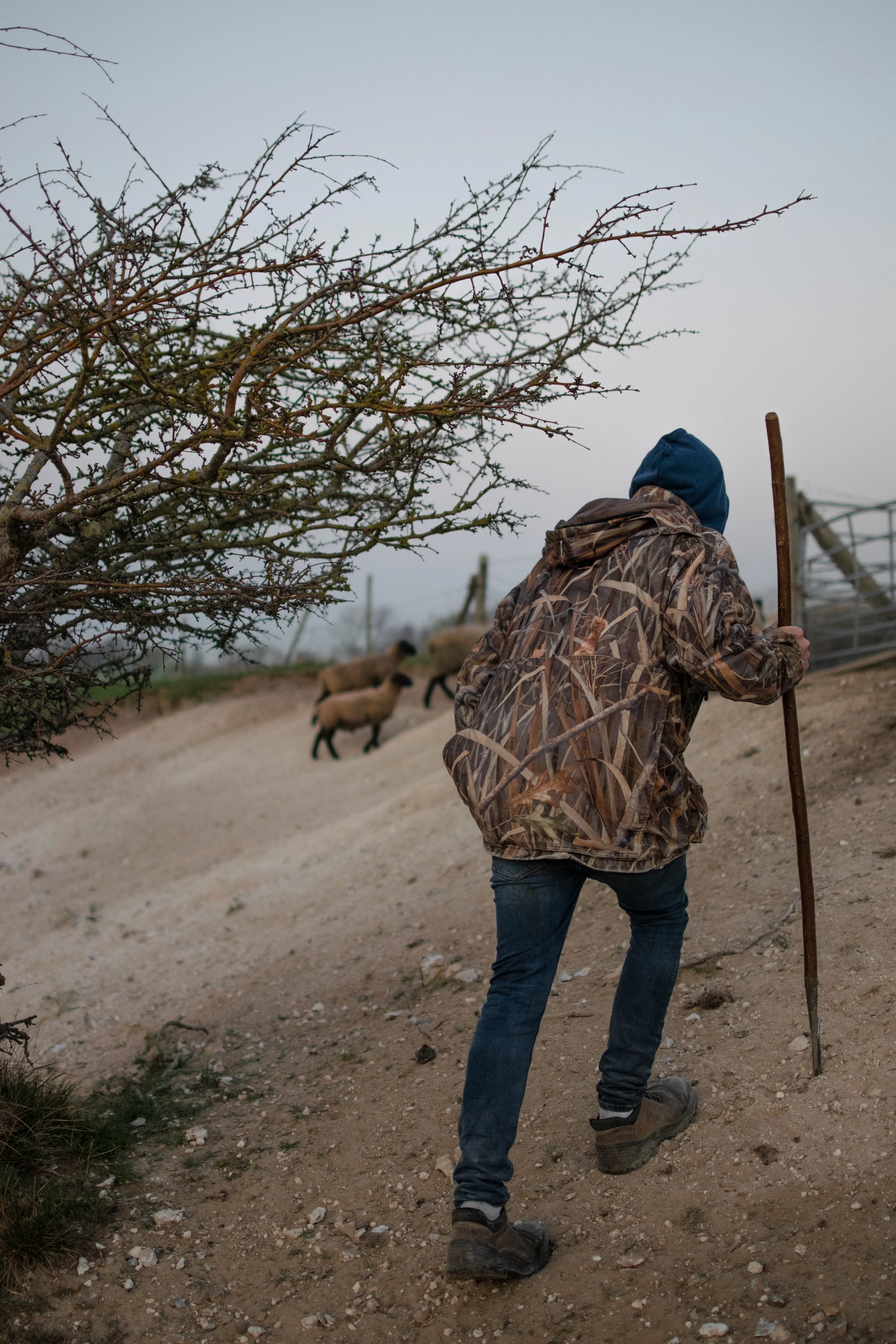The lambs of the salt meadows of the Baie de Somme
When I met Edouard, he was sitting on the bench of one of the half-buried hunting huts, one of dozens of them in the bay meadows, where many hunters go duck hunting in autumn and winter, in this vast bay and its meadows regularly flooded with sea water, leaving a pale, white film on the scrubby and low vegetation. In this magnificent place, far from the tumult of tourism in the surrounding towns, a flock of sheep and lambs, about 500 of them, graze calmly under the watchful eye of the shepherd and his dog. Shepherd for only a few years, Edouard knows his job perfectly well, having practised it since childhood. This requires - among many other things - an acute knowledge of the area, to guide the sheeps towards the brackish water and avoid the gullies and meanders in particular. The flock is raised on this poor soil, which is unsuitable for cultivation but perfect for the sheep and their lambs, which are then sold for consumption under the PDO (protected designations of origin) label "Lamb meat from the salt meadows of the Baie de Somme". The lambs are kept much longer than those from elsewhere, as their growth is prolonged due to their pasture-based diet. Édouard and his father are among the ten or so lamb breeders in the bay, of whom only 4 shepherds practise this form of breeding which shapes the landscape of the meadows of the bay and which has lasted for several centuries.

The landscape of salt marsh in the bay. Meanders, ravines, cracked white soil, grass and ponds

Édouard and his irreplaceable partner



Wet areas, brackish and fresh waters.



Back to the night pasture with the sheeps, to prevent the marsh from being sullied with the effluents from the sheeps.


The herd gets to a higher pasture for the night under the guidance of Édouard and his dog


Hunters huts and ponds shape the local landscape


The presence of the livestock contributes to the vegetation and the growing patterns of plants

The small ravines and crevisses are a common feature of this landscape, they fragment space

On the edge of the ponds and basins, one can see halophilic plants and the white cracked soil






